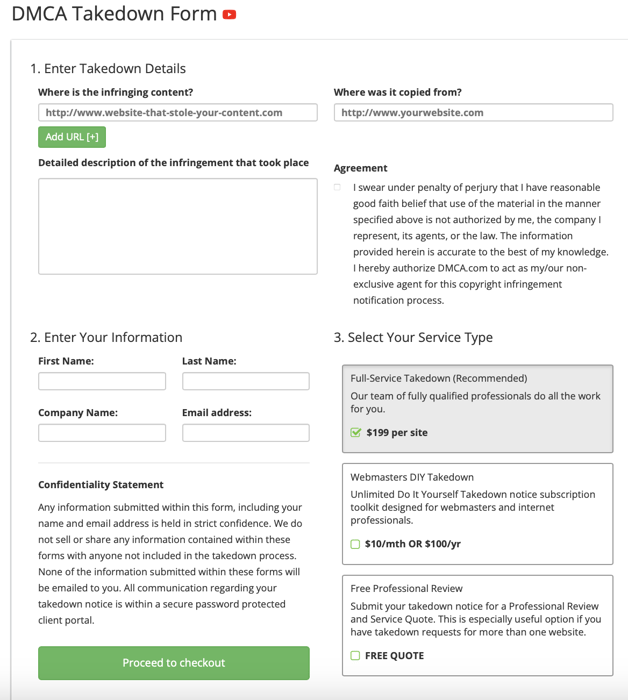You’ve published your article, performed SEO, and now you sit back to observe the results. But somehow your article is not able to sustain itself on the search engine results page. One reason why this could happen is due to plagiarized content.
According to a study by Plagiashield that included 200k articles from the top 100 News leaders. It was found that 62% of published news stories were not unique. That’s not all, at least 85% of their text was used as it is elsewhere on the web.
To shed light on this, we had a conversation with Jeremy Mauboussin, Founder of PlagiaShield, to talk about plagiarism and how publishers can protect their website content.
What is plagiarism and can search engines identify it?
Plagiarism is taking someone else’s work and publishing it as your own. Certain country laws treat it differently depending on the quantity of text plagiarized and whether the goal was to benefit from such content.
As for search engines, Google cannot distinguish between original and plagiarized content at the moment. However, it does have a removal-based demotion system. So if a website has multiple content taken down because of plagiarism, Google will rank it lower.
How does someone plagiarizing your content affect you?
News publishers must understand the opportunity cost of their content getting copied. Ideally system should have been above to penalize plagiarizers but currently the results are terrible. Jeremy has seen a website lose 70% of its traffic and a dropped in SERP ranking when its content was plagiarized.
Because of plagiarism Google figured that the content was just not original enough resulting in a drop in organic traffic. The only way to prevent this is to tell Google about these infringements. The plagiarized content is removed from Google's index and the original content gets preference. So, the opportunity cost of plagiarized content is loss of traffic both in terms of visitors or even potential customers.
How to find who is copying from you?
The simplest way is to look at your SEO tools and if there are lots of backlinks from a particular site that is not a part of your SEO strategy, start investigating.
You might find some articles with your content and your internal links. Another way is to pick a few sentences from your article, perform a Google Search and see what comes up. There are some traditional plagiarism checkers that can help you find duplicates of your original content piece as well.
Also Read: 5 Tools For Editors To Check Plagiarism
Steps to take if your content is plagiarized
So you figure out that your content is being stolen. There are so many things to do as your next step.
- Start with emailing the domain owner. Inform them that their pages are infringing your copyrights and ask to remove such pages. If they do not respond, you can contact their hosting provider, as they may be receptive to some scamming sites doing large scale plagiarism. Afterall, it’s not only about traffic but also about your reputation.
- The DMCA (Digital Millennium Copyright Act) form is very effective. The resolution can even be done within an hour, given that you provide the correct details and the case is not too complicated. You can fill up the form from any location in the world.

- Reach out to a legal expert or a lawyer. This step ensures that the domain does not repeat the same over and over again. Moreover, experts ask for both, removal of content and compensation.
How often should you look for plagiarism?
Newsrooms should check for plagiarism weekly. Publications that cover ‘breaking news’ must check daily or once in 2-3 days. This is because not reporting duplicates in time might actually result in loss of crucial initial impressions from Google Discover, Google News, etc.
Publishers with evergreen content need to check for plagiarism often since such content gives you traffic for a very long time.
The End Benefit to News Publishers
The main advantage is that publishers get all their potential traffic, and the complete fruit from their investment. Additionally, you also gain backlinks from articles that have quoted you but hadn’t linked back initially. This ultimately adds up and enhances your long term backlinking and SEO strategy. You can also ask for the proper canonical link and this will only strengthen your article. This becomes a very powerful backlinking technique.
Also Read: Content Curation: How Newsroom Teams Could Get Started
How do big editorial teams tackle plagiarism for the magnitude of content they create?
This is definitely something that organizations are not used to working on. They can start with traditional plagiarism checkers, where you add article link or content, the tool will scan your latest articles and for each of them it will find all the potential tips. You have to constantly monitor and take action.
Large publications can't scan millions of articles. They can start looking at domains that frequently show up with their content. This way, you can quickly discard all the content syndication platforms and zero in on the plagiarizers.
All in all, one cannot stress enough on the importance of original and unique content today. If you’re putting efforts into your content strategy, then it’s your right to protect your content and preserve it from getting into the hands of scammers.
<






